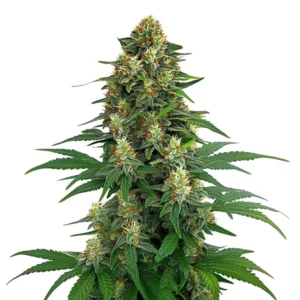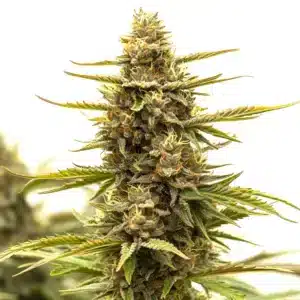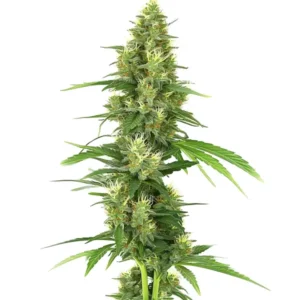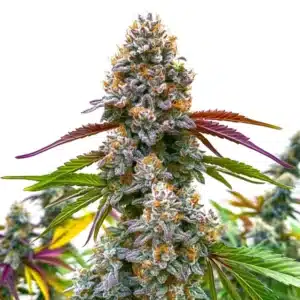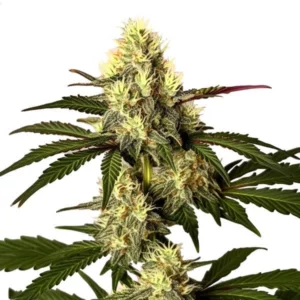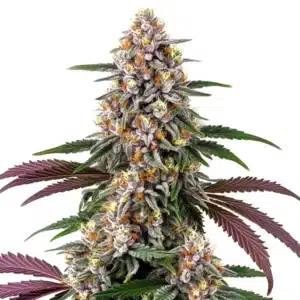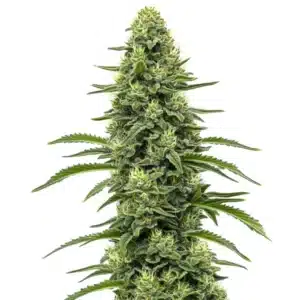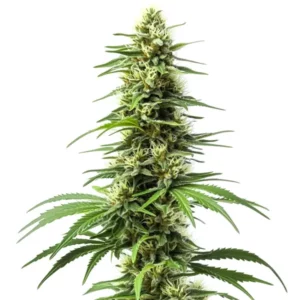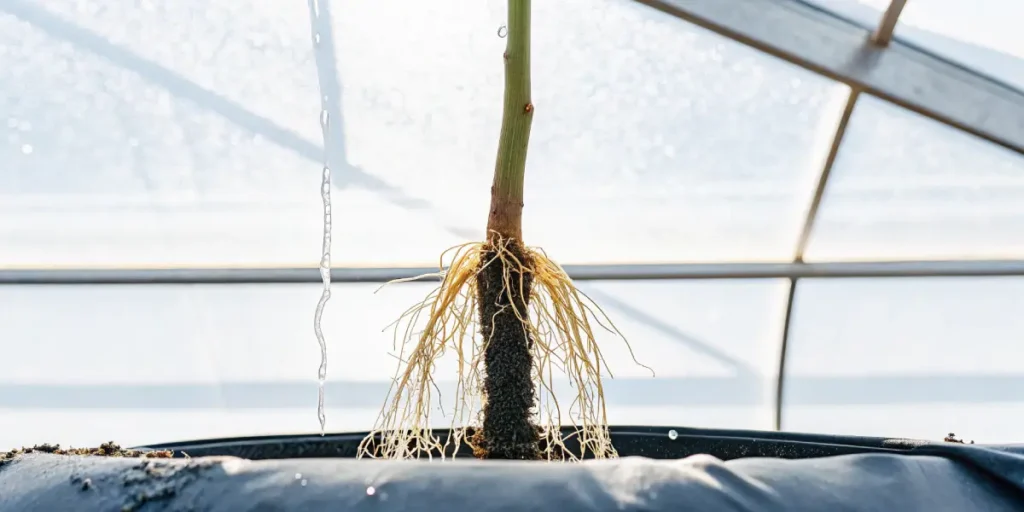
How Cannabis Plants Absorb Water and Nutrients
Cannabis plants are fascinating in how they manage their water and nutrient needs. They have an efficient system that ensures they get what they need to grow and thrive. Whether you’re a first-time grower or have a few seasons under your belt, knowing how cannabis plants absorb water and nutrients can improve your cultivation results.
The cannabis plant water absorption process starts with the roots. Roots are designed to pull water from the soil, essential for the plant’s survival. Water is drawn up through the roots by a process called osmosis, where the plant’s internal water pressure changes to balance with the soil.
Recommended Strains
Gorilla x Z OG Auto
|
|
THC | 18% - 20% (Medium) |
|
|
Type | Autoflowering |
|
|
Yield | Medium |
|
|
Phenotype | 65% Indica / 35% Sativa |
Tangie
|
|
THC | 19% - 22% (Medium) |
|
|
Type | Feminized |
|
|
Yield | High |
|
|
Phenotype | 30% Indica / 70% Sativa |
Nutrient uptake in cannabis cultivation is just as crucial. Roots don’t just drink water; they absorb nutrients dissolved in it. These nutrients are the building blocks for growth, affecting everything from leaf size to bud potency. Different cannabis strains, such as those from Blimburn Seeds, have unique needs that you can cater to by knowing this process.
The Cannabis Plant Water Absorption Process
Water absorption in cannabis is a well-coordinated endeavor. The roots play the starring role, pulling water into the plant through tiny root hairs. These hairs increase the surface area of the roots, making it easier for the plant to get enough water, even in dry conditions. Knowing how cannabis plants absorb water and nutrients is essential, since the process not only supports hydration but also ensures the uptake of minerals needed for healthy growth and strong yields.
Once inside, water travels through the plant’s vascular system, reaching every part, from the stems to the leaves. This internal highway allows the plant to cool itself through evaporation and helps transport nutrients where they’re needed most.
Knowing the cannabis plant water absorption process is essential for tailoring your watering techniques to your specific growing conditions. By observing how your plants respond to different watering schedules, you can fine-tune your approach to ensure optimal growth and health. This process is crucial during different growth stages, from seedling to flowering.
The rate of water absorption can be influenced by environmental factors such as temperature and humidity. During hotter periods, plants may require more frequent watering, while cooler conditions might necessitate less. Monitoring these external conditions alongside internal plant cues can guide you in making informed decisions about your irrigation practices.
- Ensure your cannabis soil is well-drained to prevent root rot.
- Regularly check soil moisture levels with a meter or by touch.
- Consider using mulch to retain soil moisture in outdoor grows.
Promos & Deals
Nutrient Uptake in Cannabis Cultivation
Cannabis plants need more than just water. They require a balanced diet of nutrients, which are typically found in the soil. These nutrients include nitrogen, phosphorus, and potassium, often referred to as N-P-K. Each plays a role in different growth stages. Knowing how cannabis plants absorb water and nutrients is key, since roots take up moisture and minerals that directly fuel growth, bud development, and overall plant health.
How cannabis roots absorb nutrients depends on the soil’s composition and pH level. If the pH is off, it can lock out certain nutrients, causing deficiencies. This is why regular pH testing and adjustments are part of successful cannabis cultivation.
Effective nutrient uptake in cannabis cultivation involves understanding the specific requirements of your chosen strain. Some strains may have a higher demand for certain nutrients, making it essential to research and adjust your feeding schedule accordingly. Tailoring nutrient delivery can lead to more vigorous growth and enhanced yields.
Additionally, the timing of nutrient applications plays a critical role in maximizing effectiveness. Applying nutrients at the onset of growth stages, such as the transition to flowering, ensures that the plant has access to the necessary building blocks when it needs them most. This careful management supports the plant’s overall health and productivity.
- Use a pH meter to test your soil regularly.
- Amend your soil with organic matter to improve nutrient availability.
- Select strains like Gorilla Zkittlez Auto from Blimburn Seeds that are known for their nutrient efficiency.
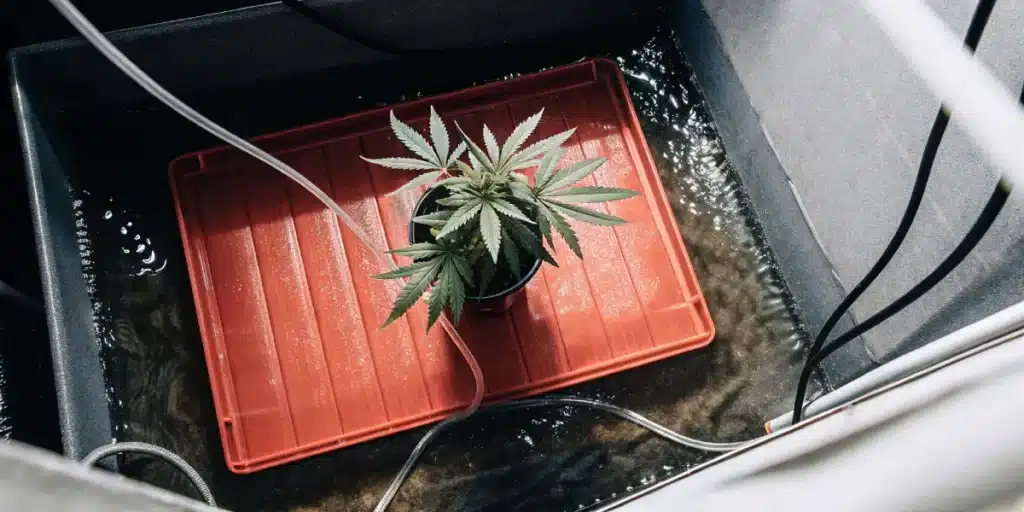
Optimizing Water Absorption in Cannabis Growing
To optimize water absorption, look beyond just watering your plants. Consider the soil type and structure. Sandy soils drain quickly but may not retain enough moisture, while clay soils hold water but can suffocate roots if too compacted.
Improving soil structure with amendments like perlite or vermiculite can enhance drainage and aeration, promoting healthy root systems. This balance ensures that the plants have consistent access to moisture without drowning the roots. Knowing how cannabis plants absorb water and nutrients is key here, since a well-aerated medium allows roots to efficiently take up both elements for optimal growth.
Optimizing water absorption in cannabis growing also involves strategic irrigation practices. Drip irrigation or soaker hoses can provide consistent moisture levels, reducing the risk of overwatering. These methods deliver water directly to the root zone, minimizing evaporation and ensuring efficient water use.
Mulching is another effective technique that can support water retention by reducing soil evaporation. By covering the soil surface with organic materials, you can help maintain stable moisture levels, which is particularly beneficial in outdoor settings where environmental conditions may fluctuate.
Strains like Tangie from Blimburn Seeds can benefit from these improvements, as they are known for their robust growth when provided with optimal soil conditions. Consistent attention to these details can dramatically improve your yield and plant health.
How Cannabis Roots Absorb Nutrients
Roots are where the action happens regarding nutrient uptake. They absorb nutrients dissolved in water through a process called diffusion. This involves nutrients moving from areas of high concentration in the soil to lower concentrations in the plant.
Root health is crucial here. Damaged or unhealthy roots can’t absorb nutrients efficiently, leading to stunted growth and poor yields. Regularly inspect your roots, especially if you’re growing in containers, to ensure they’re healthy and white, not brown or slimy.
Knowing how cannabis roots absorb nutrients can lead to more effective cultivation practices. Roots must remain healthy and free of obstructions to maximize nutrient uptake. Techniques such as gentle root pruning and transplanting can help stimulate root growth and enhance nutrient acquisition.
Furthermore, the symbiotic relationships between roots and beneficial microorganisms in the soil can significantly impact nutrient uptake. How cannabis plants absorb water and nutrients is closely linked to these interactions. Mycorrhizal fungi, for example, extend the root network, increasing access to nutrients and improving plant resilience. Incorporating these microbes into your soil can provide a natural boost to nutrient absorption.
Strains like Do-Si-Dos from Blimburn Seeds are known for their resilience, making them a great choice for those who want a forgiving plant while still learning the ropes of nutrient management.
Cannabis Soil and Nutrient Interaction
The interaction between cannabis soil and nutrients is intricate. Good quality soil will have a balanced nutrient profile, but as plants grow, they deplete these nutrients. Replenishing them with fertilizers or compost is necessary to maintain healthy growth.
Organic options like compost or worm castings can provide a slow-release nutrient source, minimizing the risk of nutrient burn. These methods create a thriving microbial environment that aids in breaking down nutrients, making them more accessible to your plants.
Successful cannabis soil and nutrient interaction relies on maintaining soil health over time. Regularly rotating soil amendments and monitoring nutrient levels can prevent imbalances and promote sustained plant vitality. A proactive approach to soil management helps ensure that plants have constant access to essential nutrients.
The dynamic between soil and nutrients also involves understanding the specific composition of your growing medium. Different soil types offer varying levels of nutrient retention and release. By customizing your soil mix to align with your plants’ needs, you can optimize nutrient availability and enhance overall growth. To truly maximize results, growers should also learn how cannabis plants absorb water and nutrients, since this process directly impacts root health, nutrient uptake, and final yields.
Regular soil testing can help you understand which nutrients are available and which are lacking. This insight allows for targeted fertilization, giving your cannabis exactly what it needs without overdoing it. Strains from Blimburn Seeds, like Purple Punch, are known to respond well to such tailored nutrient plans.
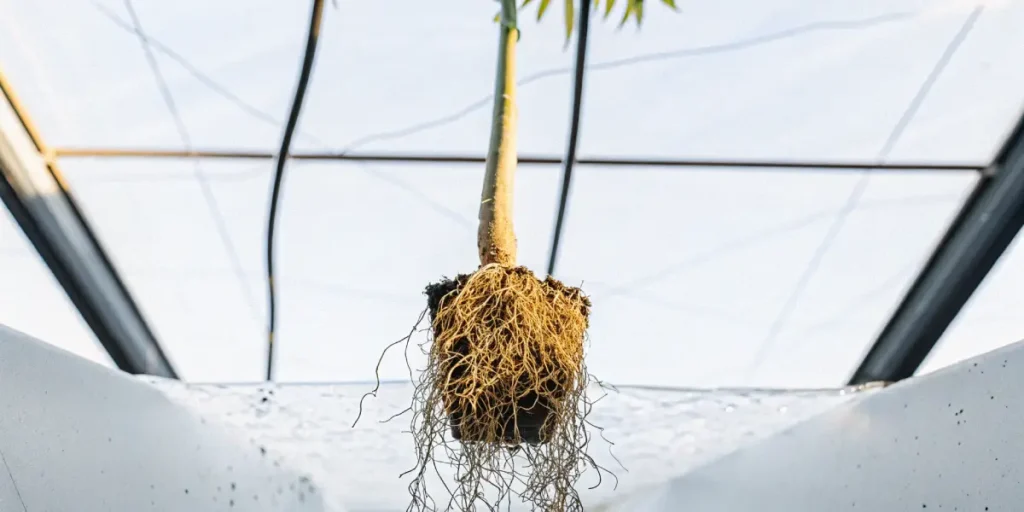
FAQs
Why is the cannabis plant water absorption process important?
Water absorption is vital because it influences nearly every aspect of a cannabis plant’s health. Water is necessary for photosynthesis, the process plants use to convert light into energy. It also helps transport nutrients and maintain the plant’s structure.
Without efficient water absorption, cannabis plants can suffer from wilting, nutrient deficiencies, and stunted growth. Managing water levels through proper irrigation and soil management is essential for achieving robust, healthy plants.
The cannabis plant water absorption process is also crucial for maintaining turgor pressure, which keeps plant cells firm and supports overall structural integrity. Adequate water levels ensure that plants remain upright and capable of capturing sunlight for photosynthesis.
Additionally, water absorption plays a role in regulating plant temperature through transpiration. During this process, water evaporation from leaf surfaces cools the plant, preventing heat stress and promoting optimal growth conditions. These factors highlight the importance of maintaining proper water absorption for cannabis plants.
How do I optimize nutrient uptake in cannabis cultivation?
Optimizing nutrient uptake involves understanding the soil’s pH and nutrient content. Regular testing helps you adjust the pH and ensure nutrients are available. Using fertilizers suited to the growth stage of your plants can also improve nutrient absorption.
Incorporating organic matter into your soil can enhance nutrient availability. This practice supports beneficial microorganisms that help break down nutrients, making them easier for the plant to absorb. Selecting strains like Critical Daddy Purple from Blimburn Seeds can also be beneficial due to their nutrient efficiency.
To further optimize nutrient uptake in cannabis cultivation, consider implementing a feeding schedule that aligns with the plant’s growth phases. During vegetative growth, plants may require higher levels of nitrogen, while flowering stages demand increased phosphorus and potassium.
Monitoring the plant’s response to nutrient applications can help you make timely adjustments, preventing potential deficiencies or toxicities. Observing leaf color, growth rate, and overall plant health will provide valuable insights into the effectiveness of your nutrient management strategy.
What are common problems with how cannabis roots absorb nutrients?
Common issues include nutrient lockout, which happens when the pH is too high or too low, preventing roots from absorbing nutrients. Overwatering can also lead to root rot, impairing nutrient uptake.
To prevent these problems, maintain a balanced pH and avoid excessive watering. Regularly inspect your plants for signs of nutrient deficiencies, like yellowing leaves, and adjust your nutrient regimen accordingly.
Another common problem with how cannabis roots absorb nutrients is compaction within the root zone. When soil is too compacted, root growth can be inhibited, reducing the plant’s ability to access nutrients. Loosening the soil gently around the roots can alleviate this issue and promote healthier nutrient absorption.
Furthermore, pests such as root aphids or nematodes can damage roots and disrupt nutrient uptake. Implementing pest management strategies, including biological controls or organic treatments, can help protect your plants and ensure they have the best chance of absorbing nutrients efficiently.
How does cannabis soil and nutrient interaction affect growth?
The interaction between soil and nutrients is crucial for plant health. Good soil provides a steady nutrient supply, but as plants grow, they need more. Regular fertilization ensures that plants have access to essential nutrients.
Poor soil conditions can lead to nutrient deficiencies or toxicities, impacting growth and yield. Choosing the right soil and managing its nutrient content is key to successful cannabis cultivation.
Knowing how cannabis soil and nutrient interaction affects growth can empower growers to make informed decisions. The right balance of nutrients in the soil influences root development and overall plant vigor, leading to healthier crops and higher yields.
Additionally, the presence of beneficial soil organisms enhances nutrient cycling and availability. Promoting a thriving soil ecosystem through organic practices or microbial inoculants can further improve nutrient interaction, resulting in robust plant growth and increased resistance to environmental stressors.
What are the best practices for optimizing water absorption in cannabis growing?
Best practices include choosing the right soil type, ensuring proper drainage, and adjusting watering schedules based on plant needs and environmental conditions. Mulching can help conserve soil moisture in outdoor grows.
Monitoring soil moisture levels using a meter can prevent over or under-watering. Adjusting your approach based on the plant’s growth stage and environmental factors will help maximize water absorption and plant health.
One of the best practices for optimizing water absorption in cannabis growing is to maintain a consistent watering routine. Irregular watering can lead to stress, affecting the plant’s ability to absorb water efficiently. Consistency helps establish a predictable environment for plant growth.
Additionally, grouping plants with similar water requirements can simplify your watering strategy. By knowing the specific needs of different strains, you can create a cultivation plan that maximizes water use efficiency, leading to healthier plants and improved yields.



